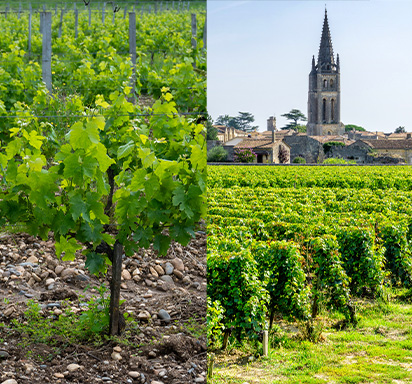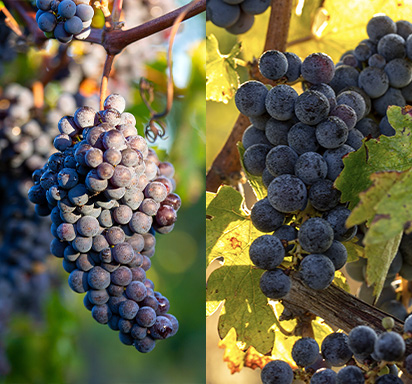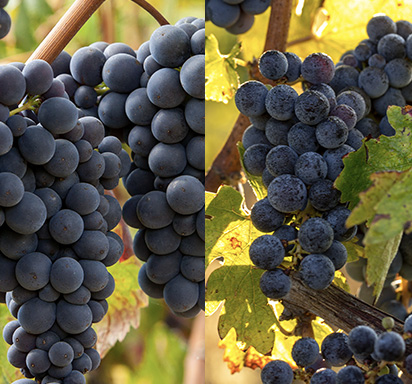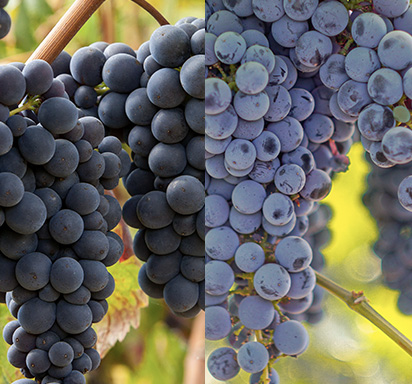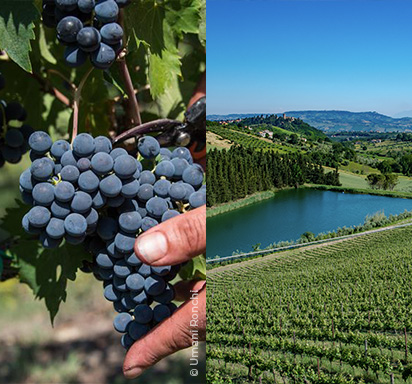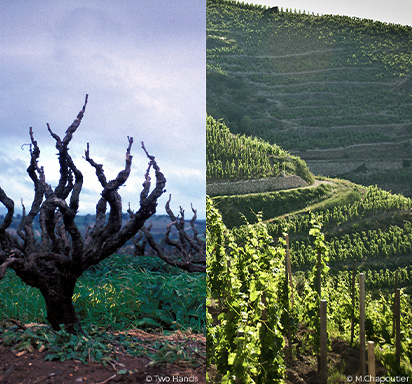Chardonnay vs. Pinot Grigio: Two Popular White Grapes
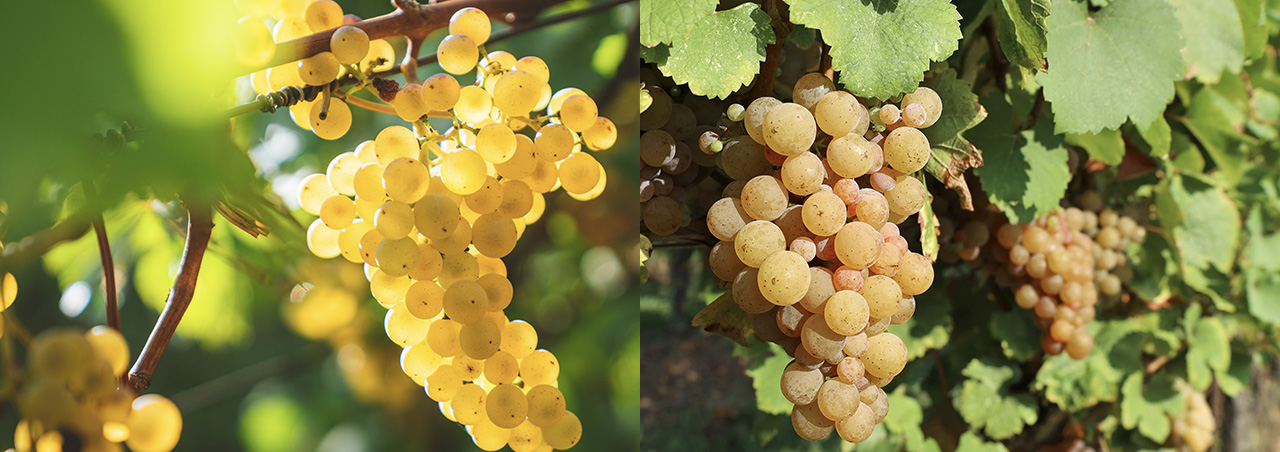
Chardonnay and Pinot Grigio are two beloved white wines with distinct flavors. Explore their origins, flavor profiles, body, food pairings, and more to find out which wine suits your taste and occasion best.
When it comes to white wines, Chardonnay and Pinot Grigio stand out as two of the most beloved and widely consumed varieties across the globe. Whether you're a seasoned wine connoisseur or a casual enthusiast, understanding the subtle differences between these two can enhance your wine experience. Let’s take a closer look at Chardonnay and Pinot Grigio to explore their distinctive flavors, origins, and what makes each of them so special.
Chardonnay and Pinot Grigio: Origins and Growing Regions
Chardonnay
Chardonnay is one of the most widely planted white grape varieties in the world, thriving in a range of climates from cool coastal regions to warmer inland areas. Its origins trace back to Burgundy, France, where it produces some of the most renowned white wines, including the mineral-driven Chablis and the richer, oak-aged styles of Meursault and Puligny-Montrachet. Chardonnay also plays a key role in Champagne, where it is used in both blends and blanc de blancs sparkling wines.
Beyond France, Chardonnay has found great success in California, particularly in regions like Napa Valley, Sonoma, and the Central Coast, where styles range from crisp and unoaked to full-bodied and buttery. Australia’s Yarra Valley and Margaret River, New Zealand’s Marlborough, and Chile’s Casablanca Valley are also known for producing high-quality Chardonnay, each with its own distinct expression influenced by climate and winemaking techniques.
Depending on how it is crafted, Chardonnay can be bright and citrusy or rich and creamy. Oak-aged versions develop complex flavors of vanilla, toasted nuts, and baking spices, while unoaked Chardonnays tend to retain crisp acidity and pure fruit character, often with a refreshing mineral edge.
Pinot Grigio
Pinot Grigio, known as Pinot Gris in France, also shares roots in Burgundy but has become most closely associated with Italy, where it thrives in the cooler regions of Friuli Venezia Giulia, Alto Adige, and Veneto. Italian Pinot Grigios are typically light-bodied, crisp, and refreshing, with bright citrus notes and a clean, dry finish.
Outside of Italy, Alsace, France, produces a fuller-bodied, spicier version of Pinot Gris with richer fruit flavors and a more textured mouthfeel. In Germany, where it is called Grauburgunder, the grape can take on a slightly richer and more aromatic profile. Meanwhile, in the United States, Oregon has emerged as a key region for Pinot Gris, crafting wines that balance fresh acidity with ripe pear and melon flavors. California, Australia, and parts of New Zealand also cultivate Pinot Grigio, often leaning toward a fruitier and more approachable style.
Regardless of where it’s grown, Pinot Grigio is widely appreciated for its light, easy-drinking nature, making it a go-to choice for warm weather and pairing with fresh, delicate dishes.
Chardonnay vs. Pinot Grigio: Flavor Profiles
Chardonnay
Chardonnay wines are celebrated for their wide range of flavors and textures, but they are most commonly known for their dry style. When young, Chardonnay often displays fresh citrus notes such as lemon and lime, along with hints of green apple and melon. However, the flavor profile can change significantly depending on the winemaking process.
Most Chardonnays are fermented to dryness, meaning little to no residual sugar remains, which enhances their crisp and refreshing nature. Unoaked Chardonnays, often produced in stainless steel tanks, tend to emphasise this dryness, with bright acidity and a clean, mineral-driven finish. These wines highlight pure fruit flavors while maintaining a lean and zesty character.
On the other hand, oak-aged Chardonnays develop a richer mouthfeel due to malolactic fermentation, which imparts a creamy texture and complex flavors of vanilla, toasted bread, and baking spices. Despite their fuller body, these wines remain dry, as their richness comes from oak influence rather than residual sugar. Whether crisp and citrusy or bold and buttery, Chardonnay remains a predominantly dry white wine, making it a versatile choice for a variety of food pairings.
Pinot Grigio
Pinot Grigio, on the other hand, is celebrated for its light, crisp, and refreshing profile. Typically, it presents bright acidity and flavors of green apple, pear, citrus, and subtle floral notes, with some versions also showing hints of white peach or almond. The wine’s naturally high acidity enhances its zesty, mouthwatering character, making it especially appealing for those who enjoy a clean and invigorating white wine.
Italian Pinot Grigios, particularly those from Friuli Venezia Giulia, Alto Adige, and Veneto, are known for their mineral-driven elegance and crisp, dry finish. These wines often have a steely, almost saline quality that enhances their refreshing nature. In contrast, Pinot Gris from Alsace, France, tends to be fuller-bodied, with a slightly richer texture and more pronounced stone fruit and spice notes. Oregon’s Pinot Gris strikes a balance between these two styles, offering both bright acidity and ripe fruit complexity.
Due to its light body and bright profile, Pinot Grigio is incredibly food-friendly. It pairs beautifully with seafood, salads, fresh pasta, and light appetizers, as its acidity cuts through delicate flavors without overwhelming them. The wine’s versatility also makes it a great choice for casual sipping, whether at a summer picnic, a beachside gathering, or as an easy-drinking aperitif.
Chardonnay vs. Pinot Grigio: Body and Texture
Chardonnay
Chardonnay’s body can range from light to full, and its texture can vary widely based on the winemaking process. As mentioned earlier, oak-aging and malolactic fermentation can make Chardonnay wines feel fuller and creamier, with a mouth-coating richness that can be very satisfying. In contrast, unoaked Chardonnays tend to have a leaner, crisper mouthfeel, making them more refreshing.
Pinot Grigio
Pinot Grigio is almost always light-bodied and has a crisp texture that emphasizes its refreshing acidity. The mouthfeel is typically clean and vibrant, with a smooth finish that lingers slightly. Pinot Grigio lacks the heaviness and buttery notes of some Chardonnays, which makes it a go-to choice for easy drinking during warmer months or casual gatherings.
Food and wine pairing: What should I pair with Chardonnay & Pinot Grigio?
Chardonnay
Due to its versatility, Chardonnay pairs well with a wide range of foods. If you’re enjoying a rich, oaked Chardonnay, consider pairing it with foods like roasted chicken, lobster with butter, or creamy pasta dishes. The full-bodied, buttery notes in these wines complement richer foods, especially those with a creamy or savory profile. A lean, unoaked Chardonnay, however, would pair beautifully with grilled fish, shrimp salads, or even sushi, as its crispness can cut through the lighter flavors without overpowering them.
Pinot Grigio
Pinot Grigio’s lightness and acidity make it an excellent choice for seafood, particularly delicate fish such as sole, flounder, or white tuna. It also pairs wonderfully with antipasti platters, fresh salads, and dishes featuring lemon or herbs. Because of its refreshing qualities, Pinot Grigio is the perfect accompaniment to light appetizers or a casual meal, making it a favorite at summer barbecues or picnics.
Price Range and Accessibility
Both Chardonnay and Pinot Grigio are available at Millesima USA and come in a range of price points, from affordable bottles to premium selections. Chardonnay and Pinot Grigio wines are widely accessible and offer excellent value for wine lovers at every budget.
Chardonnay and Pinot Grigio: which one should I choose?
Chardonnay and Pinot Grigio each hold a special place in the hearts of wine drinkers worldwide, and for good reason. Chardonnay offers a broader spectrum of flavors, ranging from crisp and clean to rich and buttery, while Pinot Grigio is a consistent favorite for those who appreciate a light, refreshing wine with crisp acidity. Whether you prefer the complexity of a well-oaked Chardonnay or the simplicity of a crisp Pinot Grigio, both wines offer something for every palate and occasion. Ultimately, the choice comes down to personal preference and the meal or moment you're pairing it with.
What are the differences between Chardonnay & Sauvignon Blanc?
If you're exploring the world of white wines, don't stop at Chardonnay and Pinot Grigio! Be sure to check out our guide on Chardonnay vs. Sauvignon Blanc to dive deeper into another classic comparison. While both wines share a crisp, refreshing quality, they offer unique flavor profiles and characteristics that are worth exploring. Whether you're a fan of the rich, full-bodied style of Chardonnay or the vibrant, herbaceous notes of Sauvignon Blanc, our guide will help you navigate your choices and enhance your wine knowledge.
You may like
The exceptional concentration of top-tier wineries and renowned appellations has long made Bordeaux a place of longing for fine wine enthusiasts and discerning hedonists around the world.
4/18/2025Malbec and Merlot are two beloved red wines, each with unique flavors, tannins,& origins. Malbec offers bold, dark fruit flavors with spice, while Merlot is smoother & more approachable. Learn their differences and food pairings.
4/1/2025Pinot Noir and Merlot are two beloved red wines with distinct flavors, aging potential, and food pairings. Discover their key differences to help you choose the perfect bottle for any occasion.
3/5/2025Pinot Noir vs. Cabernet Sauvignon—two iconic red wines with distinct flavors, body, and food pairings. Learn about their origins, characteristics, and how to choose the perfect bottle for any occasion in this in-depth guide.
3/4/2025Montepulciano refers to both a red grape variety and a wine region. Discover the differences between the bold Montepulciano grape from central Italy and the elegant wines of Tuscany's Montepulciano region.
1/20/2025Syrah and Shiraz are two names for one and the same grape variety, the name of which varies depending on the region and style of the wine. We reveal how the wines differ stylistically - and what unites them.
1/7/2025












